Skeletal System 7.10
1/15
Earn XP
Description and Tags
upper limb
Name | Mastery | Learn | Test | Matching | Spaced |
|---|
No study sessions yet.
16 Terms
bones of the upper limbs
humerus, radius, ulna, carpals, metacarpals, and phalanges
humerus
long bone that extends from the scapula to the elbow
upper end has a smooth, rounded head that fits into the glenoid cavity of the scapula
below the head are two processes-a greater tubercle on the lateral side and a lesser tubercle on the anterior side
tubercles provide attachments for muscles that move the upper limb at the shoulder
between them is a narrow furrow, the intertubercular sulcus (intertubercular groove)
narrow depression along lower margin of the humerus that separates it from the tubercles called the surgical neck (many fractures occur here)
near middle of bony shaft on the lateral side is a rough, V-shaped area called the deltoid tuberosity —> provides attachment for the deltoid
at lower end of the humerus are two smooth condyles, a lateral capitulum that articulates with the radius and a medial trochlea that articulates with the ulna
above the condyles on either side are epicondyles —> provide attachments for muscles and ligaments of the elbow
between epicondyle anteriorly is a depression, the coronoid fossa. receives process of the ulna (coronoid process) when the elbow bends
depression on the posterior surface, the olecranon fossa, receives a different ulnar process, the olecranon process, when the elbow straightens
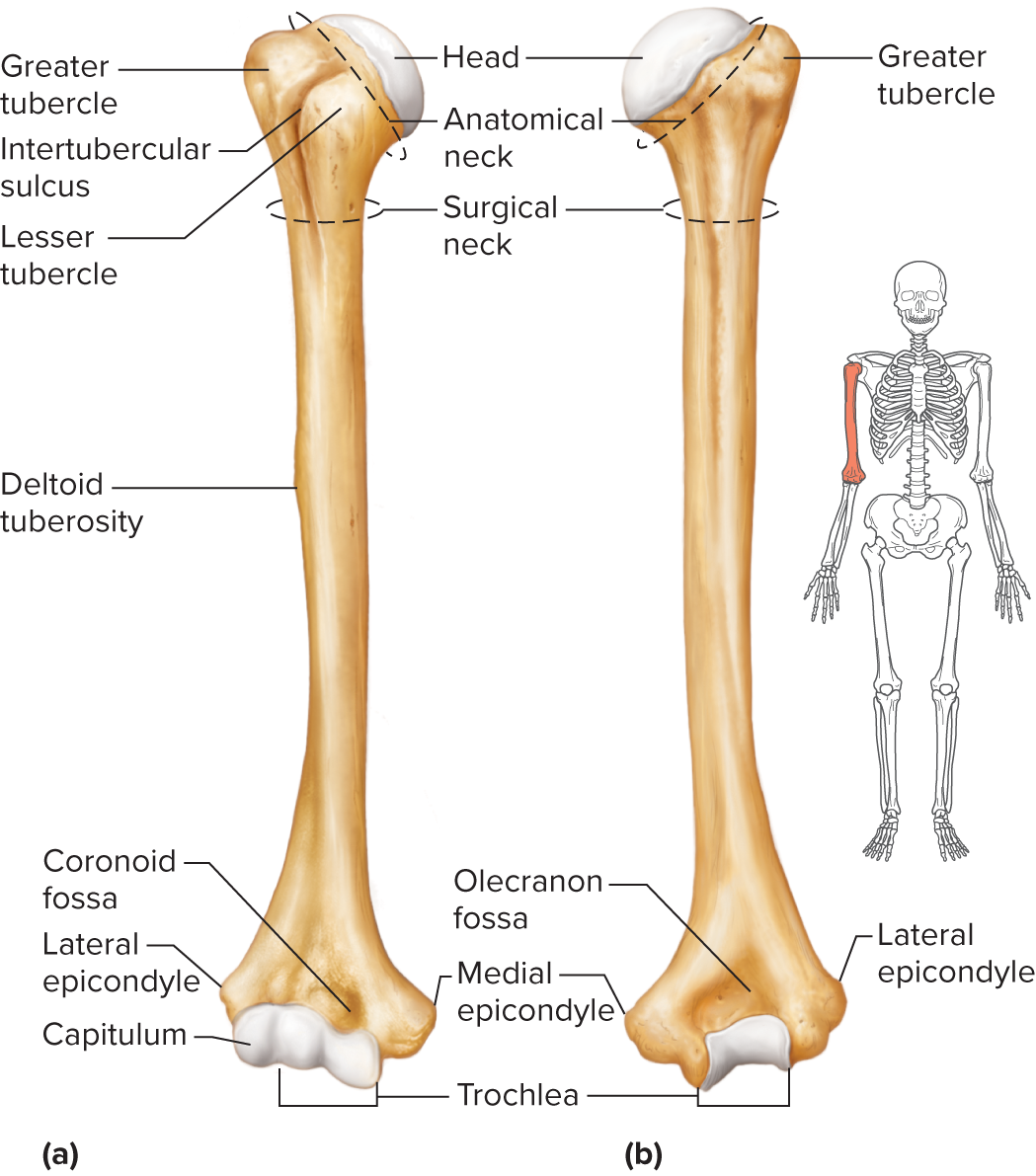
radius
crosses over the ulna when the hand is turned so that the palm faces backward
thick, disclike head at the upper end of the radius articulates with the capiulum of the humerus and a notch of the ulna (radial notch) . allows radius to rotate
below the head on the radial shaft is radial tuberosity. attachment for biceps brachii
at distal end of radius, a lateral styloid process provides attachments for ligaments of the wrist
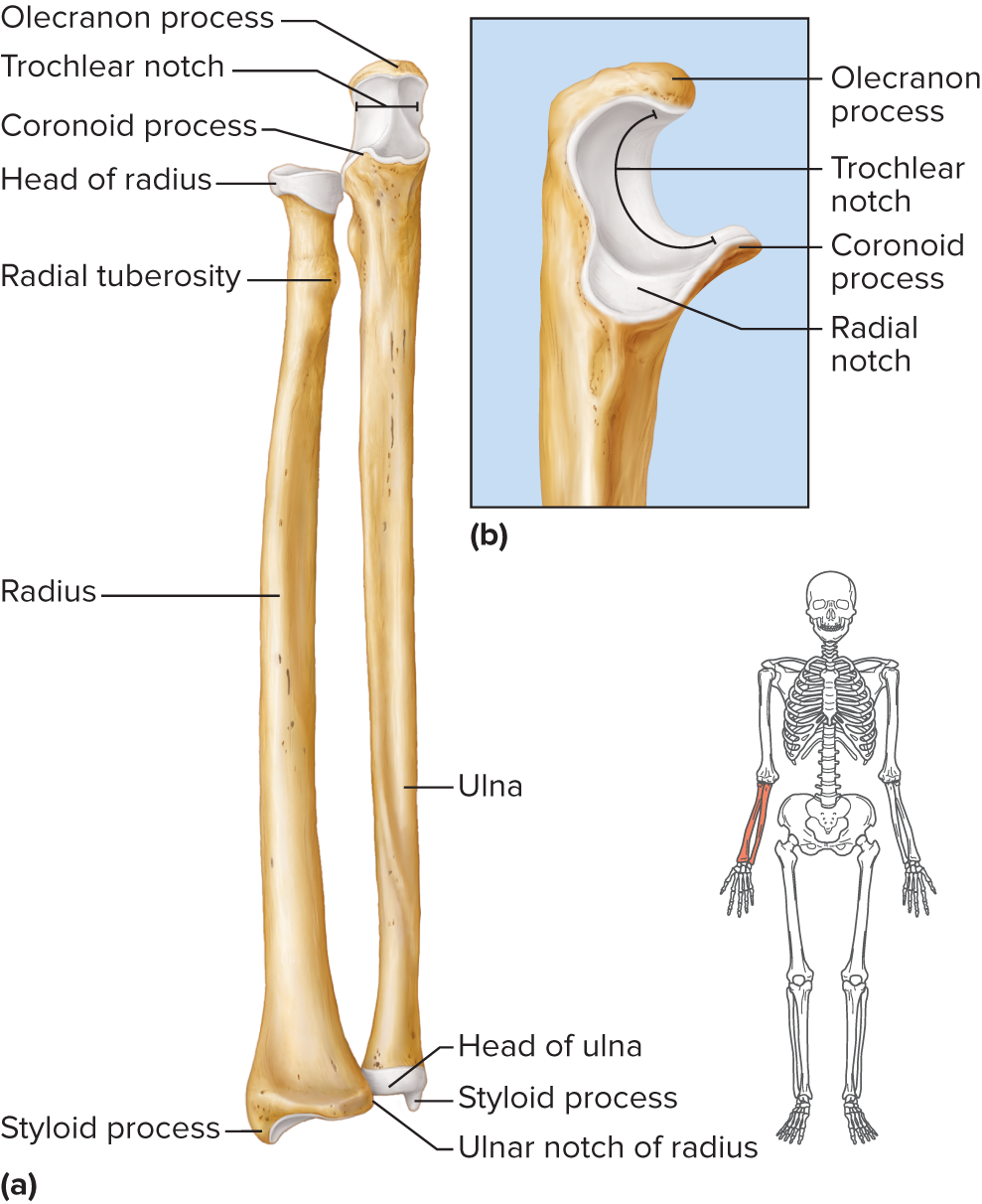
ulna
medial to the radius and longer than the radius
at the proximal end, ulna has a wrenchlike opening, the trochlear notch, that articulates with the trochlea of the humerus
olecranon and coronoid process above and below this notch provide attachment for muscles
at distal end, knoblike head articulates laterally with a notch of the radius (ulnar notch) + disc of fibrocartilage inferiorly
medial styloid process at the distal end of the ulna provides attachments for wrist ligaments
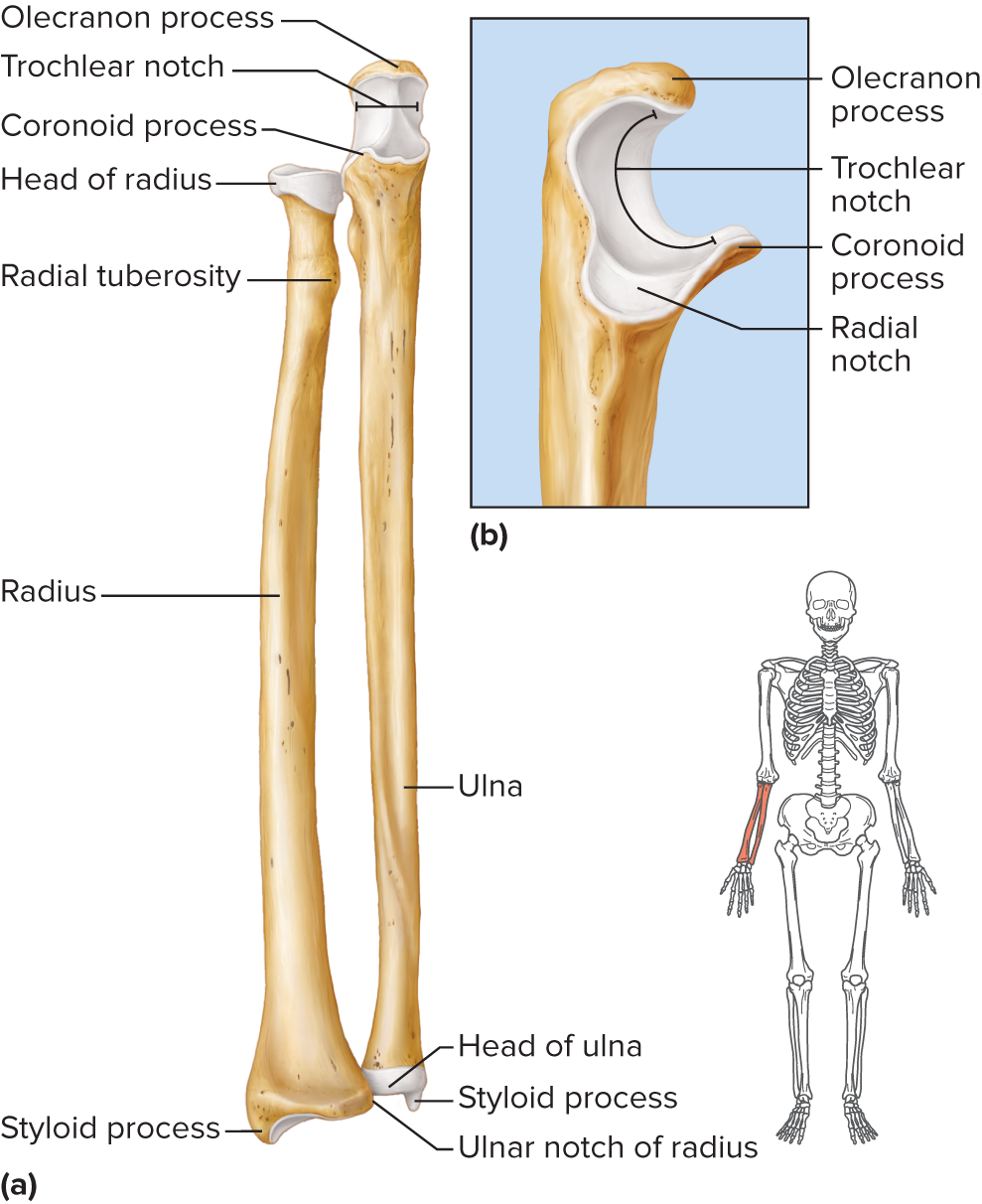
hand
made up of the wrist, palm, and fingers
8 carpal bones in two rows of four bones each. resulting compact mass is called a carpus
carpus articulates with the radius and the fibrocartilaginous disc on the ulnar side
distal side articulates with the metacarpal bones
five metacarpal bones
cylindrical with rounded distal ends that form the knuckles of a clenched fist
phalanges are finger bones
each finger has three phalanges - a proximal, middle, and a distal phalanx — except the thumb, which was two (no middle phalanx)
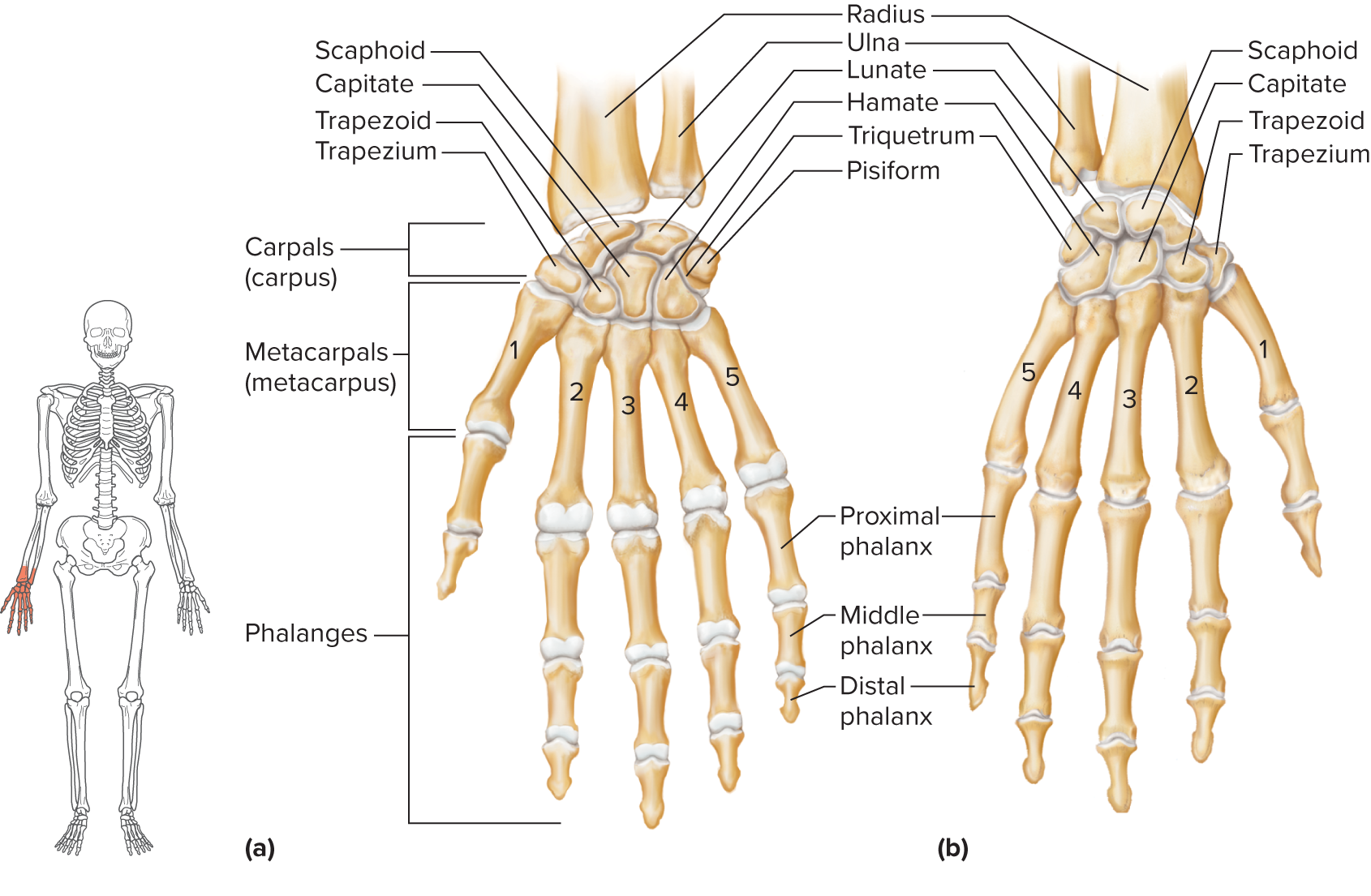
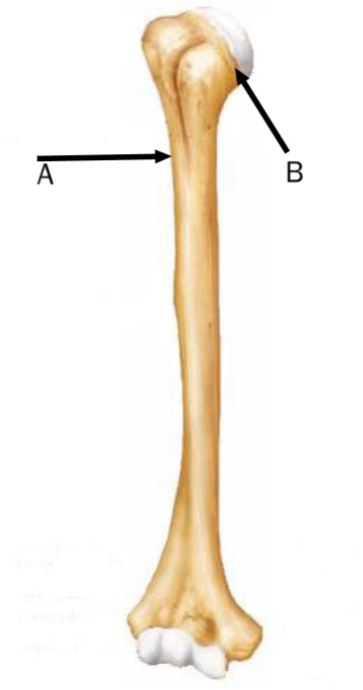
A - surgical neck; B - anatomical neck
on the lateral distal end of the humerus is the __, a round condyle that articulates with the radius
capitulum
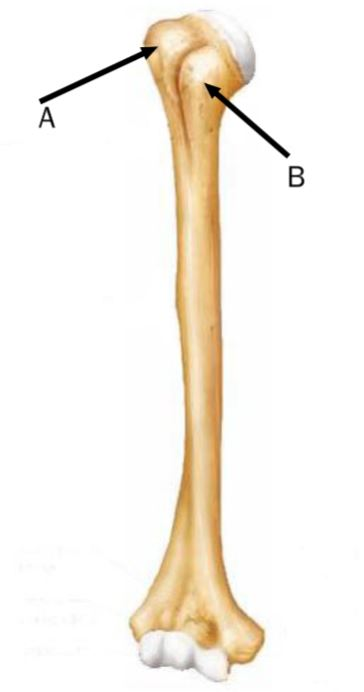
A - greater tubercle
B - lesser tubercle
the ____ of the humerus is located just distal to the head while the ___ of the humerus is distal to the tubercles
anatomical neck; surgical neck
on the medial distal end of the humerus is the ___ , a condyle that articulates with the ulna
trochlea
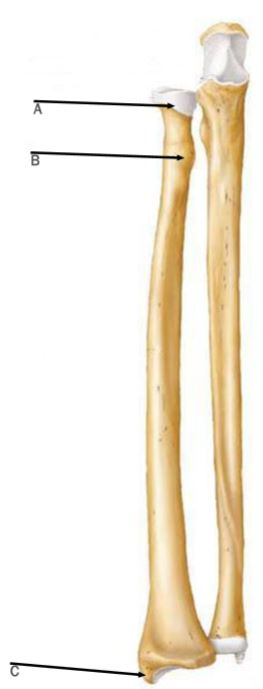
A - head
B - radial tuberosity
C - styloid process
in the humerus, the narrowing between the head and the two tubercles is called the __ neck
anatomical

identify
radial tuberosity
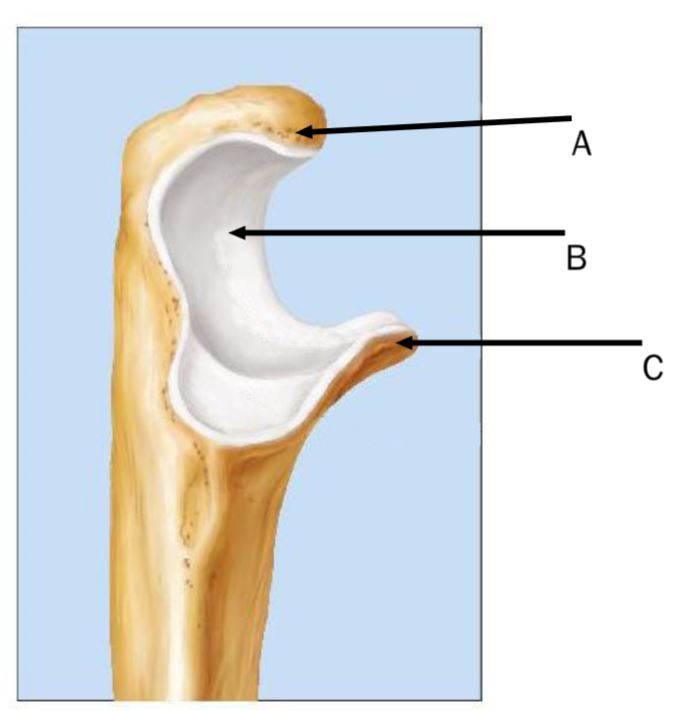
A - olecranon process
B - trochlear notch
C - coronoid process

olecranon process
where is the head of the ulna located?
distal end of the bone